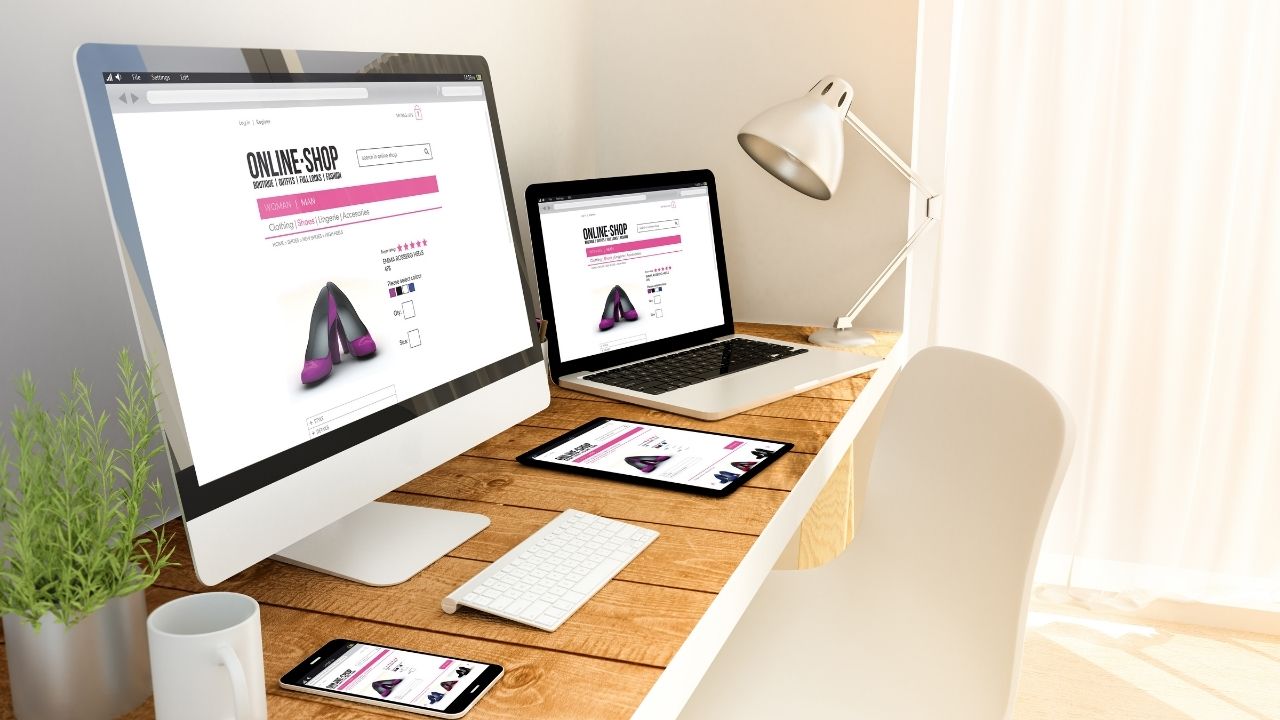Are you struggling to find the right balance in your web design? Wondering whether dynamic or static symmetry is the way to go? Look no further!
In this article, we'll explore the importance of symmetry in web design and dive into the pros and cons of both dynamic and static symmetry.
By the end, you'll have a clear understanding of which symmetry style works best for your web design needs.
So, let's get started and create a visually stunning website that grabs your visitors' attention!
Key Takeaways
- Symmetry in web design plays a crucial role in creating harmony, balance, and organization for users.
- Dynamic symmetry brings flexibility, movement, and excitement to layouts, while static symmetry enhances visual appeal, stability, and professionalism.
- Dynamic symmetry captures attention and encourages exploration, but may make navigation and content consumption challenging.
- Static symmetry ensures even distribution and alignment of elements, but limits flexibility and creativity in placement and arrangement.
The Importance of Symmetry in Web Design
You should understand the importance of symmetry in web design. Symmetry plays a crucial role in creating visual harmony and balance on a website. It provides a sense of order and organization, making it easier for users to navigate and understand the content.
Symmetry can be achieved through the use of grids, columns, and balanced layouts. When elements on a webpage are aligned symmetrically, it creates a visually pleasing experience for the user.
However, it is also important to recognize the role of asymmetry in web design. While symmetry is important, incorporating some degree of asymmetry can add interest and dynamism to the design. It allows for creativity and can help highlight specific elements or sections of a website.

Ultimately, understanding and utilizing both symmetry and asymmetry in web design can lead to a more engaging and visually appealing user experience.
Exploring Dynamic Symmetry in Web Design
Exploring how to achieve a more flexible and fluid layout in web design is essential for creating a visually engaging user experience. By incorporating dynamic symmetry techniques and movement, you can bring life and energy to your website.
Dynamic symmetry allows for a sense of balance and harmony while also adding an element of movement and excitement. It helps guide the user's eye through the page, creating a seamless flow of information. With dynamic symmetry, you can create visually interesting compositions that capture attention and keep users engaged.
Understanding Static Symmetry in Web Design
Understanding how static symmetry can enhance the visual appeal and balance of a website is crucial for creating a captivating user experience.
When exploring the concept of static symmetry in web design, it is important to understand that it involves arranging elements in a balanced and harmonious manner. By using static symmetry, you can create a sense of order and stability on your website. This can help users navigate through the content more easily and make it more visually pleasing.
Static symmetry can be achieved by aligning elements along a central axis or by using equal spacing between elements. It can provide a sense of organization and make your website look more professional.
Pros and Cons of Dynamic Symmetry in Web Design
When it comes to the impact of dynamic symmetry in web design, you'll find that it can greatly enhance the overall visual appeal of your website. By incorporating elements that are off-center or asymmetrical, you can create a sense of movement and energy that captivates your users.

However, it's important to consider the user experience implications of dynamic symmetry, as it can sometimes make navigation and content consumption more challenging.
Impact of Dynamic Symmetry
The impact of dynamic symmetry on web design is significant. By incorporating dynamic symmetry principles into your website, you can achieve visual interest and create a more engaging user experience.
However, it is important to be aware of the limitations of dynamic symmetry and not rely on it as the sole design principle. While dynamic symmetry can help in creating a sense of balance and harmony, it may not always work for every type of website or design.
It is crucial to consider the specific needs and goals of your website and balance dynamic symmetry with other design elements to ensure a cohesive and effective design.
User Experience Considerations
Now let's talk about user experience considerations when it comes to dynamic and static symmetry in web design.
As a user, your engagement is crucial for a website's success. One important aspect to consider is visual hierarchy. By using dynamic symmetry, designers can create a more engaging and visually appealing experience. Dynamic symmetry can guide your eyes to important elements, such as call-to-action buttons or key information, making it easier for you to navigate and find what you need.
On the other hand, static symmetry can provide a sense of balance and order, creating a clean and organized layout. However, it might not capture your attention as effectively as dynamic symmetry.

Ultimately, the choice between dynamic and static symmetry depends on the goals of the website and the desired user experience.
Pros and Cons of Static Symmetry in Web Design
When it comes to static symmetry in web design, you will find that it offers a traditional and balanced approach. The use of static symmetry ensures that elements on a webpage are evenly distributed and aligned, creating a sense of harmony and stability.
However, one downside to static symmetry is its limited flexibility and creativity, as it restricts the placement and arrangement of elements. Despite this limitation, static symmetry does provide a consistent and organized layout, making it a popular choice for websites that prioritize structure and order.
Traditional and Balanced
Go for a traditional and balanced web design to create a visually appealing and harmonious user experience. Traditional web design focuses on classic elements and timeless layouts that have proven to be effective over time.
It incorporates balanced design principles, such as symmetrical layouts, evenly distributed elements, and a sense of order and stability. This approach creates a sense of familiarity and ease for users, making it easier for them to navigate and find what they need.
A balanced web design ensures that elements are proportionate and well-organized, creating a sense of harmony and visual equilibrium. By adhering to these principles, you can create a website that not only looks visually appealing but also provides a seamless and enjoyable user experience.
Limited Flexibility and Creativity
Creating a visually appealing and harmonious user experience can be challenging due to limited flexibility and creativity. When working within the confines of flexibility limitations and creative restrictions, it can feel like you are constantly hitting a wall.

These constraints force you to think outside the box and find innovative solutions. Although it may seem frustrating, these limitations can actually lead to more focused and intentional design choices. By embracing the challenge, you can push yourself to explore new ideas and techniques that you may not have considered otherwise.
It's important to remember that sometimes a restricted canvas can actually enhance the overall user experience, as it forces you to prioritize and simplify your design elements. So, don't be discouraged by the limitations, embrace them and let your creativity shine through.
Consistent and Organized
The consistent and organized user interface ensures a seamless navigation experience. With a consistent design, elements such as buttons, menus, and icons are presented in a uniform manner throughout the website. This allows users to easily recognize and understand how different elements function, creating a sense of familiarity and reducing the learning curve.
An organized layout further enhances the user experience by arranging content in a logical and intuitive manner. Information is presented in a structured way, making it easier for users to locate the desired information quickly.
The consistent design and organized layout not only improve navigation but also contribute to the overall aesthetics of the website. By providing a visually pleasing and user-friendly experience, the interface promotes engagement and encourages users to explore more.
Choosing the Right Symmetry for Your Web Design
When choosing the right symmetry for your web design, it's important to consider the overall aesthetic and user experience. You want to strike the right balance between visual appeal and user engagement.
Symmetry plays a crucial role in creating a harmonious and pleasing design. Dynamic symmetry, characterized by asymmetry and movement, can add energy and interest to your website. It allows for a more modern and unconventional look, capturing the attention of users.

On the other hand, static symmetry, with its balanced and ordered arrangement, can create a sense of stability and reliability. It is ideal for websites that require a more professional and traditional image.
Ultimately, the choice between dynamic and static symmetry depends on your brand identity, target audience, and the goals you want to achieve with your website.
Frequently Asked Questions
What Are Some Examples of Websites That Effectively Use Dynamic Symmetry in Their Design?
There are numerous websites that effectively use dynamic symmetry in their design. Examples include Apple, Airbnb, and Nike. The benefits of dynamic symmetry in web design include creating a sense of movement and visual interest.
How Does Static Symmetry Impact the User Experience on a Website?
Static symmetry in web design has implications for the user experience. It provides a sense of balance and order, making navigation easier. The benefits include a clean and organized layout, which can enhance user engagement and overall satisfaction on a website.
Are There Any Web Design Trends That Favor One Type of Symmetry Over the Other?
Web design trends constantly evolve, and some favor dynamic or static symmetry over the other. These trends impact the user experience by creating visually pleasing and balanced designs that engage and guide users effectively.
Can Dynamic Symmetry Be Used in Conjunction With Static Symmetry in Web Design?
Combining dynamic and static symmetry in web design can be beneficial in website layout. By using both types of symmetry, you can create a visually appealing and balanced design that engages users.
Are There Any Specific Industries or Niches Where One Type of Symmetry Is More Commonly Used in Web Design?
In the fashion industry, static symmetry is commonly used in web design to create a sense of balance. However, dynamic symmetry in e-commerce websites offers advantages like visual interest and a unique user experience.

Conclusion
In conclusion, when it comes to choosing between dynamic and static symmetry in web design, it ultimately depends on the goals and preferences of the designer.
Dynamic symmetry offers a more fluid and visually engaging experience, while static symmetry provides a sense of stability and order.
Both have their pros and cons, and it's important to consider the specific needs of the website and its target audience.
By carefully considering these factors, you can make an informed decision and create a web design that effectively communicates your message and achieves your desired outcomes.

